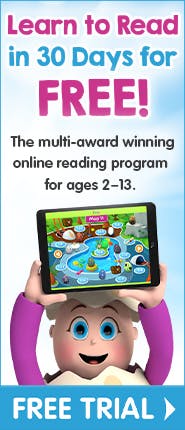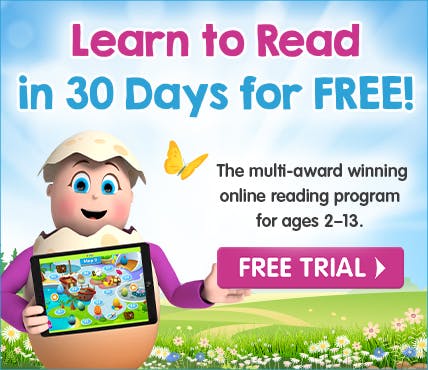


Homeschool Tips for Helping Children with Autism Read

Many parents of children with autism prefer to play a more active role in their child’s education, which is the reason why some of them turn to homeschooling.
Homeschooling parents understand their own child’s strengths and weaknesses better than anyone else. Helping a child with autism learn to read involves the ability to observe how these strengths and weaknesses affect the child’s ability to learn.
Reading Eggs is the research‑based homeschool reading programme that helps children of all learning abilities learn to read. Start your free trial now.
While every child is unique and learns differently, there are three major components found to be highly beneficial in teaching children with autism to read:
Most children who have autism are visual learners. This means that they prefer to have their learning material presented to them visually.
Children with autism tend to respond better to simple, concise and minimal instructions for completing a specific task or applying a certain skill.
Many children with autism respond favourably to phonics‑based instruction when it comes to learning to read. Ideally, this would be presented to them in a visual and uncomplicated manner.
Keeping these three components in mind, homeschoolers can try the following strategies to help children with autism learn to read:
Teach your child vocabulary with picture books and flash cards.
Many children with autism are visual learners, and benefit when a whole word is accompanied by its picture. Remember to present the picture and the printed word on the same side of the card if using flashcards.
'Show' your child nouns and act out action words.
When teaching your homeschooler nouns, allow them to hear you speak the word while you display the picture and printed word simultaneously. When teaching verbs, hold up a card with the action word (e.g. “wave”) and act out the verb by showing that action (e.g. waving while saying “wave”).
Put labels on objects and toys.
Gather the objects and toys that your child regularly uses. Then write the first letter of its name on a card and tape it to the object. Each time your child asks to use or play with it, ask them what letter it starts with. Over time, move on to labelling each object with the entire word.
Create a distraction-free zone.
Read together in a quiet and sensory‑neutral space. It’s best to choose a dimly lit room with little or no posters or artworks on the wall. Sit on the floor with your child and speak in a quiet voice. Avoid fidgeting or multi‑tasking while reading with your child, and don’t forget to take frequent reading breaks to provide regular sensory stimulation.
Use clear and short phrases with your homeschooler.
Avoid varying your language too much or using different words when giving directions or instructions. Ensure phrases are clear and concise, for example, “Sarah, read your book with Mummy/Daddy” or “Read the first page of this book”.
Let your child read the same story again and again.
Many children with autism enjoy and benefit from repetition, and by reading the same story again, you can help them pick up important language skills. Choose books that have a lot of repetition of phrases, such as nursery rhymes. Softly clap along to the rhythm together.
Enhance learning with technology.
A study in the Journal of Autism and Development Disorders found that children with autism gain greater enjoyment from computer‑based instruction in reading. Choose phonics‑based programs like Reading Eggs that include rich visuals and a self‑paced learning structure.
Reading Eggs is the award‑winning learn to read programme for homeschoolers. Start your free trial now and see how your child can learn to read with Reading Eggs.
Testimonials from parents and homeschoolers
“[My daughter] has autism and struggles with her written and verbal communication. Reading Eggs is so much fun for her and she asks to do it. She has done so much over the holidays and it is very encouraging to see her want to learn.”
– Julie H
“Reading Eggs has been the best purchase for our homeschool this year. Our 8‑year‑old dyslexic son loves and learns from this visually exciting programme. It has helped his reading and also his writing as he has started his own 'Reading Eggs' story book! He draws his own map, creates characters for each level and writes a story for each one – amazing!”
– Edyth N
“Collin is nearly 13 and profoundly autistic. Public school had pretty much written him off as unteachable. We pulled him out of school to attempt teaching him on our own. Thankfully I found Reading Eggs. In two months’ time we have gotten through three maps and he scored 93, 86 and 100 on his quizzes. He is soaking it in like a sponge. He is reading at a kindergarten level (up from zero reading skills) and he is improving on a global scale…socially, verbally, cognitively. Our heads are spinning!! [I] just wanted you to know that you had a part in something really big for one young man. Thank you, Reading Eggs!”
– Proud parent
“I would just like to say how wonderful this program is. My son has autism and has made more progress with this program than any other method we have employed at home and school so far. I think you should approach the autism societies across the world and promote Reading Eggs to them. I think they would find it invaluable. Thank you for helping my son to read in a most enjoyable manner.”
– Annie


